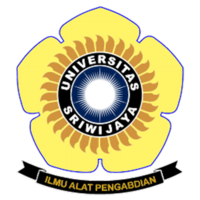Pengembangan Sapi Potong dengan Model Sistem Pertanian Terpadu Berdasarkan Luas Lahan di Kabupaten Minahasa
Abstract
Lainawa, J., Endoh, E. K. M., &Oroh, F. N. S. (2024). Beef cattle development with integrated farming system model based on land area in Minahasa District. In: Herlinda S et al. (Eds.), Prosiding Seminar Nasional Lahan Suboptimal ke-12 Tahun 2024, Palembang 21 Oktober 2024. (pp. 358–373). Palembang: Penerbit & Percetakan Universitas Sriwijaya (UNSRI).
Land utilization and management with an integration system of beef cattle and agricultural crops is not yet popular among farmers in Minahasa district. This condition makes the development of beef cattle population, production, productivity and competitiveness less well developed. The purpose of this study was to determine the economic, ecological and social feasibility of integrated farming systems of beef cattle integration with agricultural crops on different land areas. The number of respondents was 60 farmers with observations on 4 integration patterns; (1) integration of beef cattle and rice crops. (2) integration of beef cattle and corn crops. (3) integration of beef cattle and vegetable crops. (4) integration of beef cattle and fruit crops. The results of the study on 4 integration patterns, on average, obtained economic and social feasibility values for its development. While the ecological study on average obtained an unfeasible value because the availability of organic fertilizer is less than the need, so that farmers still depend on the use of inorganic fertilizers. Economic feasibility states that the integration system can reduce production costs which results in increased farmer income. While social feasibility states that the use of organic fertilizers can reduce dependence on inorganic fertilizers, so as to reduce production costs that can provide hope for developing a business with an integrated system. The conclusion is that the integrated farming system of beef cattle and agricultural crops can be developed on various land area criteria in Minahasa district because it is economically and socially feasible. While the availability of organic fertilizer has not been declared feasible because it has not been able to meet the needs of fertilizer.
Keywords
Full Text:
PDFArticle Metrics
Abstract view : 120 timesPDF - 187 times
Refbacks
- There are currently no refbacks.

